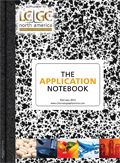Optimizing LC–MS and LC–MS-MS Methods
Many parameters within liquid chromatography–mass spectrometry (LC–MS) methods are "locked and left" - that is, they are optimized using a few methods when new, then only changed if absolutely necessary because of poor analytical performance.
Many parameters within liquid chromatography–mass spectrometry (LC–MS) methods are "locked and left" — that is, they are optimized using a few methods when new, then only changed if absolutely necessary because of poor analytical performance. This is fine when methods are performing as they should be and producing data which is fit for purpose, but the following question should also be asked: Do you know when your data aren't as good as they could be? Here we consider some parameters in LC–MS that can be optimized to improve sensitivity and reproducibility in LC–MS.
The most significant choice in many LC–MS methods is the mode of ionization. The generally accepted rule is that electrospray ionization (ESI) works best for higher-molecular-weight compounds that are more polar or ionizable, and atmospheric pressure chemical ionization (APCI) is best for lower-molecular-weight, less-polar compounds. Atmospheric pressure photoionization (APPI) was originally designed to work with less-polar analytes, however the careful choice of dopant or the use of direct ionization sources can significantly extend the capability of APPI techniques. In all atmospheric pressure ionization source types there are a multitude of interrelated factors that affect the degree of analyte ionization, including analyte pKa value, electronegativity, relative proton affinity, ionization energy, and volatility. "New" analytes should be screened using all available techniques to optimize instrument response. Furthermore, although the "polarity" of the interface may seem obvious when screening lower-molecular-weight acids or bases, one can often be surprised at which polarity mode gives the optimum signal with more-complex molecules. Be sure to screen analytes in both polarity modes to ensure optimum response, especially when the analyte is not ionizable, and avoid "guessing" which mode might be best.
The capillary (sprayer) voltage can have a major effect on efficiency of ionization, and it will change with the analyte type, eluent system, and flow rate. This parameter is perhaps the most overlooked variable in terms of improving instrument response and one should consider optimizing to improve not only sensitivity but also reproducibility. At a higher applied potential, one should be cautious to assess quantitative reproducibility because there are various nonideal spray modes that will give rise to a signal but will result in variable ionization efficiency.
The efficiency of ion sampling from within the electrospray will vary widely with analyte type, applied voltage, solvent system, drying gas parameters, and eluent flow rate. The position of the sprayer relative to the sampling orifice (both axially and laterally) should be optimized when the highest sensitivity is required.
Nebulizing gas flow rate and heating requirements will change with the nature and flow rate of the eluent, and, in general, smaller droplets are preferred within ESI experiments to improve the efficiency of the droplet charging process. When changing eluent systems (especially the amount or nature of the organic component) or flow rate, consider optimizing the nebulizing gas settings. Similarly, drying gas requirements will change with the changing nature of the eluent system (including during gradient analyses where the range of organic composition alters greatly [large ΔΦ]) and should be optimized especially when eluent systems are highly aqueous. Electrospray efficiency is often improved by adding "dopants" such as isopropanol to allow a reduction in droplet surface tension; however, note that the sprayer position, nebulizing gas, and drying gas settings may need to be altered for optimum signal response.
In ESI, analytes may be charged through processes such as charge transfer or triboelectric charging at the capillary tip. Although this may produce a satisfactory response, one should consider adjusting the eluent system to give the ionized form of the analyte in solution (eluent pH higher than analyte pKa for acids and lower for bases). This can result in orders of magnitude improvement in instrument sensitivity; however, it may also require an adjustment in high performance liquid chromatography (HPLC) operating conditions to properly retain the ionized analyte or reoptimize the separation selectivity. The use of ion-pairing reagents such as trifluoroacetic acid should be avoided and volatile buffers chosen so that the buffer pKa is within ±1 pH unit of the eluent system pH.
Ion suppression or enhancement effects occur when there are species that strongly compete with, or are suppressed by, the presence of your analyte. When quantitative sensitivity is poor or the analyte signal is highly irreproducible, one should investigate the effects of the eluent system and matrix on the instrument response. These effects can often be overcome by altering the eluent system to reduce the ionic strength or change the buffer type, or by more studious sample preparation, designed to isolate the analyte from the interfering matrix component.
The vast majority of LC–MS instruments are capable of analyte declustering, especially with respect to water molecule clusters. The application of an accelerating voltage in the first stage of the mass spectrometer to cause low energy collisions with background molecules can often lead to an improvement in instrument sensitivity, primarily due to a reduction in noise around the analyte signal.
When performing MS-MS analysis, it is important when seeking optimum sensitivity and quantitative accuracy to optimize the collision energy as well as the "dwell" time between measuring ion transitions to avoid "cross-talk" effects that can significantly affect quantitative measurements.

Removing Double-Stranded RNA Impurities Using Chromatography
April 8th 2025Researchers from Agency for Science, Technology and Research in Singapore recently published a review article exploring how chromatography can be used to remove double-stranded RNA impurities during mRNA therapeutics production.
The Effect of Time and Tide On PFAS Concentrations in Estuaries
April 8th 2025Oliver Jones and Navneet Singh from RMIT University, Melbourne, Australia discuss a recent study they conducted to investigate the relationship between tidal cycles and PFAS concentrations in estuarine systems, and offer practical advice on the sample preparation and LC–MS/MS techniques they used to achieve the best results.




















